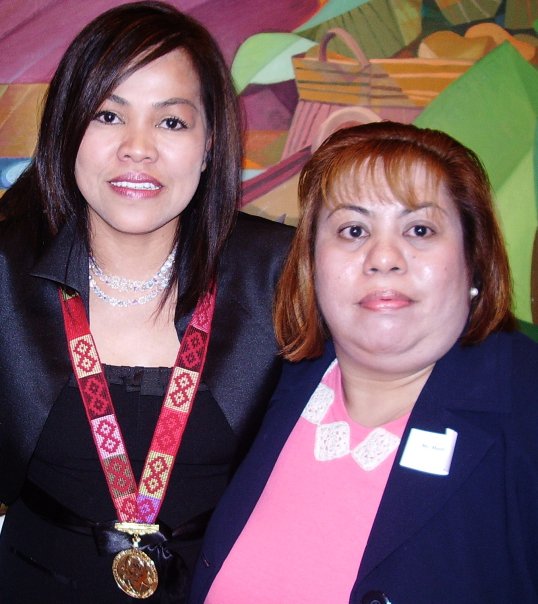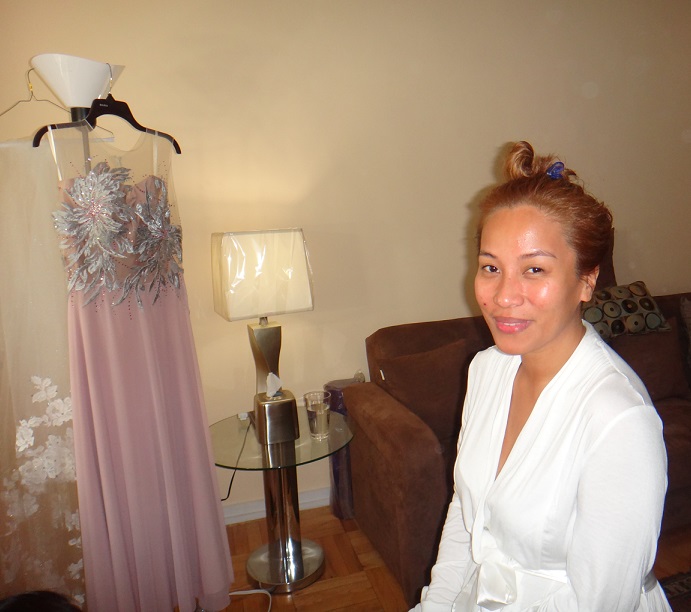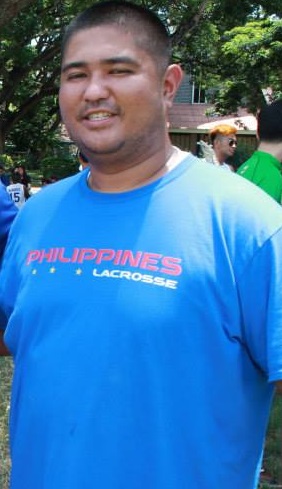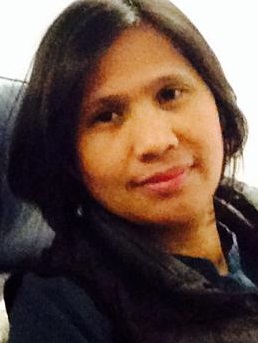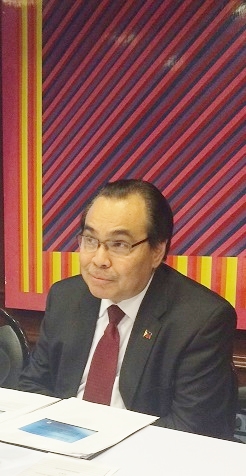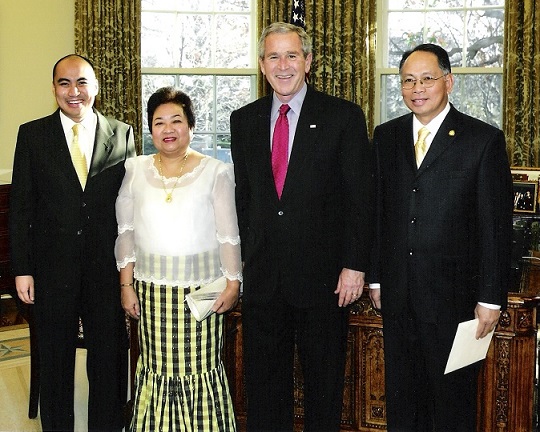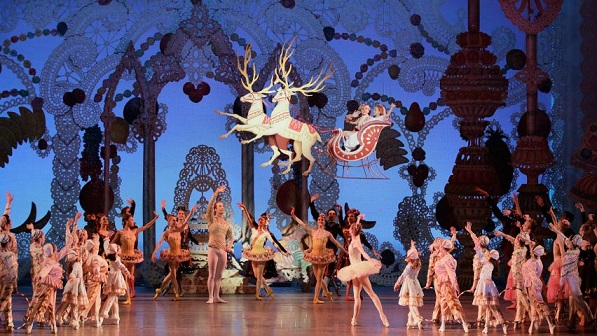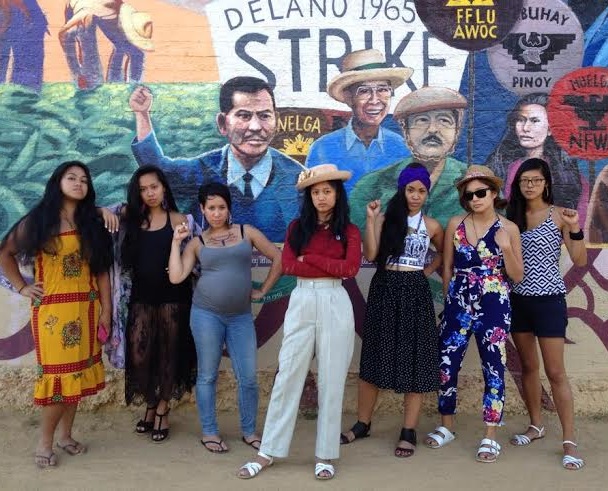The Filipino Renaissance: Finding a viable balance between community dialogue and popular theater (Part 3)
This latest Investigative Reporting Project chronicles important milestones in Filipino American theater history in New York. The author, Renee Barabad Floresca, is an actor, director, educator and writer whose latest production, “Undressing the Fragments,” is playing Oct. 24th to 26th at Wow Café Theatre at the Lower East Side between Bowery and 2nd Avenue. — Editor.
By Renee Barabad Floresca
Gabriela New York, formerly known as Filipinas for Rights and Empowerment, opened their theatre production, “Diwang Pinay: Labanan ang Pang-aapi sa Ating mga Makabagong Bayani” (Resist the Enslavement of Our Modern-Day Heroes) in May of 2013. This would be the beginning of my personal renaissance as a theater artist.
The production focused on a group of migrant Filipino workers known as the Florida 15 (F15) who had been brought to Florida from the Philippines by a man named Jojo Villanueva.
In “Diwang Pinay,” I was cast as the female version of Villanueva. During a rehearsal in which several members of the F15 were present, Candice Sering, the director, asked a few of the F15 human trafficking victims to stand in a scene in place of missing cast members. They stood on stage as I performed the role of their aggressor, Jojo. I was called Josie in the play. Soon after, I asked to step out of the scene to collect my thoughts and emotions regarding the gravity of the F15’s disposition and their presence in the space—this moment informed the trajectory of the journey I lead today.
Since “Diwang Pinay,” my dedication to using theatre as a tool of education and dialogue has grown. The cast and crew of DP, the sisters of Gabriela NY, and the rich discussions within the National Alliance for Filipino Concerns and the New York Committee for Human Rights in the Philippines and the courage gathered by each member of the F15 contributed to my awakening. The gravity of our community’s struggles, resistance and resilience has shaped my work as an artist.
Filipino Renaissance in New York
It is the artist’s responsibility to create work that intentionally activates community discussion and inspires progressive action. Since “Diwang Pinay,” several leaders who identify as Filipino in New York City are spearheading what I refer to as “The Filipino Renaissance.” It is a grassroots movement that seeks to create work that promotes art, culture, identity, spirituality and/or traditions as a way to develop and enlighten the self, and, as a result, impact the community.
Jana Lynne Umipig is a multi-talented artist most known for her work as the creator of the Journey of a Brown Girl (JOBG). Umipig defines JOBG as a “theatre work built by the continuous activation and transformation of every community and individual who engages in it.”
JOBG cultivates solidarity, spirit and collectivity. It is a testament to our collective consciousness or the ‘kapwa’ mentality of our people. While on tour with the women of JOBG in California, I was able to dialogue with several of the actors, my colleagues and sisters, on their thoughts on the current state of Filipino performing artists in America.
Voices of the people
“Any major minority group in American culture, once they address their place in America, they make a name for themselves,” said Leslie Hubilla, a multi-talented performance artist. “What’s stopping us is that we haven’t had strong works of art on a larger scale that address those issues for Filipino-Americans.”
Precious Sipin, an artist and educator who teaches musical theater and improv to grade-school children, stated, “I want to pay homage to what has been done.” In conversation, she mentioned Tisa Chang, Ralph B. Pena, Mia Katigbak and the work of other leaders and artists as “the pioneers of Asian American theatre,” particularly on the East Coast.
“The ground is finally fertile for us to define who we are as Filipino artists, because they’ve paved the way for us to at least be seen,” Sipin elaborated.
Karen Pangantihon is another performer and co-creator of the monthly open mic series, “Shut Up for What?!” hosted at the Filipino-owned coffee bar Mountain Province.
“It could be a lot of internal struggle. Us being aware of the struggle, but just talking about it in our little corners and not bringing it forth to the world and integrating with other mediums and people not wanting to work in commercial work because they think it’s selling out,” she said.
“When are we going to get out from our corners and integrate?” Pangantihon asked. “I do think a lot of it is holding ourselves back.”
Asian Americans are a growing population in the country, yet the roles that have been written for our “type” tend to be overly simplified and sometimes still racist. Existing in the art world as a Filipino in America is a radical statement in itself. The struggles that led us, as a community, to fight for our voices to be included within the landscape of American literature and media are a testament to our ever-growing progression, but there is still work to do.
“Will the people support it (our work), not just see it, but will they invest in it? Will they give you the financial need to sustain it? Will they give you the space to create?” Sipin asked.
“We’re always progressing; it’s the people who need to catch up,” Sipin noted, referring to both the American and Filipino people. “There has always been this taboo when we label ourselves as artists.” She added, “Art is essential to progressing society as a whole.”
These women performers are just some of the many voices and talent that make up the larger landscape of Filipino artists who are creating work that is for the people, as well as balancing community theatre with commercial work.
The Filipino Renaissance is one made up of many people, from leaders, organizers, writers and educators like Andre Dimapilis, Kirklyn Escondo, Chauncey Velasco, and Claro de los Reyes to name a few. For every Filipino artist who shares their livelihood with our community to make our community rise, your contributions echo in eternity, for future generations to grow. I invite and challenge everyone in our community to share and celebrate your artistry.
Part 1: The first wave of Asian American actors were Filipinos
Part 2: ‘Here Lies Love’ provides full-time jobs to FilAm artists
The FilAm’s Investigative Reporting Project is made possible through the generous support of our readers and contributors including the following:
Consuelo Almonte
Melissa Alviar
Amauteurish.com
Bessie Badilla
Sheila Coronel
Joyce and Arman David
Menchu de Luna Sanchez
Kathleen Dijamco
Jen Furer
Marietta Geraldino
Dennis Josue
Lito Katigbak
Rich Kiamco
Monica Lunot-Kuker
Michael Nierva
Lisa Nohs
Cecilia Ochoa
Rene & Veana Pastor
John Rudolph
Roberto Villanueva
2 anonymous donors


